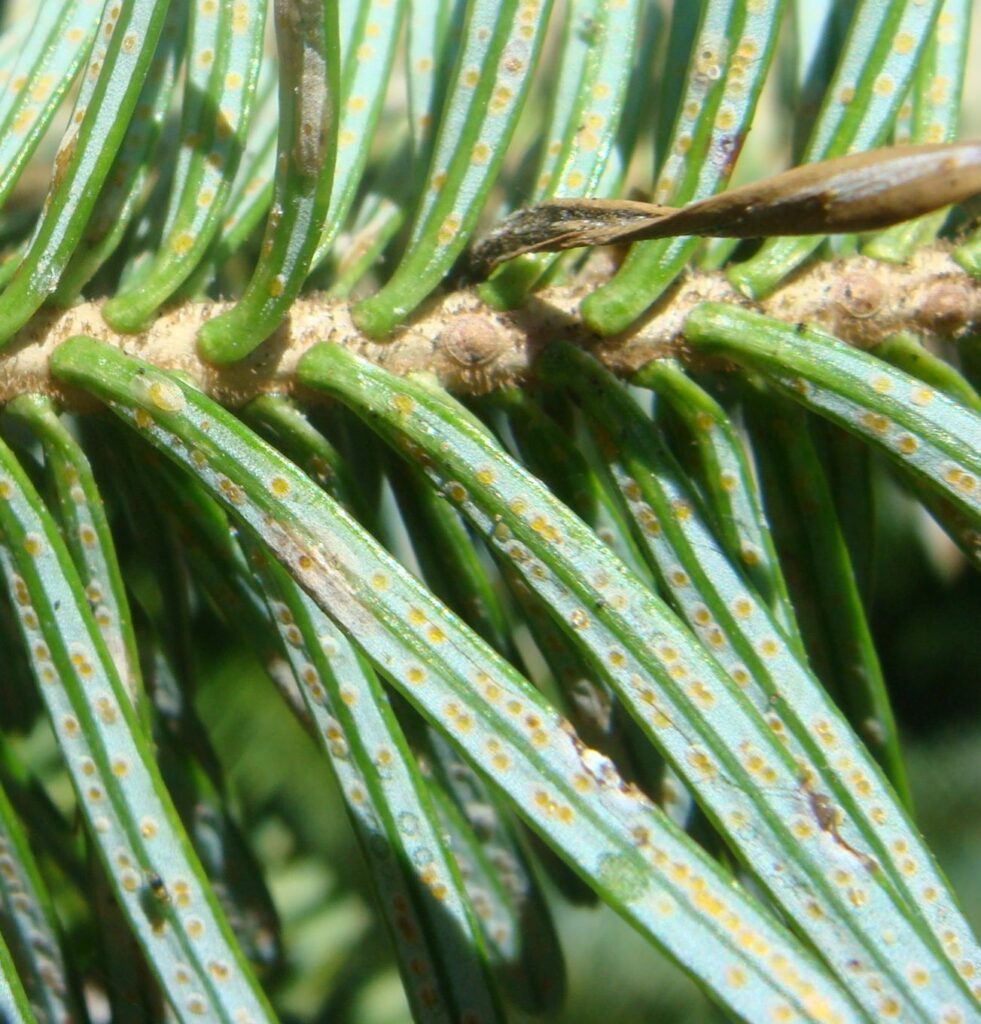Scouting for Cryptomeria Scale
go.ncsu.edu/readext?792417
en Español / em Português
El inglés es el idioma de control de esta página. En la medida en que haya algún conflicto entre la traducción al inglés y la traducción, el inglés prevalece.
Al hacer clic en el enlace de traducción se activa un servicio de traducción gratuito para convertir la página al español. Al igual que con cualquier traducción por Internet, la conversión no es sensible al contexto y puede que no traduzca el texto en su significado original. NC State Extension no garantiza la exactitud del texto traducido. Por favor, tenga en cuenta que algunas aplicaciones y/o servicios pueden no funcionar como se espera cuando se traducen.
Português
Inglês é o idioma de controle desta página. Na medida que haja algum conflito entre o texto original em Inglês e a tradução, o Inglês prevalece.
Ao clicar no link de tradução, um serviço gratuito de tradução será ativado para converter a página para o Português. Como em qualquer tradução pela internet, a conversão não é sensivel ao contexto e pode não ocorrer a tradução para o significado orginal. O serviço de Extensão da Carolina do Norte (NC State Extension) não garante a exatidão do texto traduzido. Por favor, observe que algumas funções ou serviços podem não funcionar como esperado após a tradução.
English
English is the controlling language of this page. To the extent there is any conflict between the English text and the translation, English controls.
Clicking on the translation link activates a free translation service to convert the page to Spanish. As with any Internet translation, the conversion is not context-sensitive and may not translate the text to its original meaning. NC State Extension does not guarantee the accuracy of the translated text. Please note that some applications and/or services may not function as expected when translated.
Collapse ▲Scientific name: Aspidiotus cryptomeriae
Where from: Introduced pest from Asia
Type of pest: Cryptomeria scale damages the tree through foliage discoloration and needle drop. It is also of regulatory concern.

Cryptomeria scales on Fraser fir
Pest description:
- Immature and adult female Cryptomeria scales look like fried eggs – a yellow center surrounded by a white ring.
- As Cryptomeria scales mature, they may appear greyish.
- Adult male Cryptomeria scales are a small, orange insects with long antennas and clear wings that fold over the top of their body. They have large black eyes. They look like adult males of elongate hemlock scales.
- Adults female scales can be viewed by removing their protective covering. They are yellow and round with a nipple-like protrusion at one end. Multiple eggs may also be seen with the female.
- Cryptomeria scale crawlers are pale yellow and oblong and look like elongate hemlock scale crawlers.
Damage to tree:
- Scale feeding causes mottled needles – yellow blotches on green needles. This is a common symptom with Cryptomeria This symptom is indistinguishable from the feeding of other species of scales.
- Scale feeding often causes needle shed. With Cryptomeria scale on Fraser fir, needle shed can be severe.
- Cryptomeria scales have been also found on dwarf Alberta spruce in western NC as well as other species of fir.
Where found in field: Cryptomeria scale incidence is typically spotty, and may even be limited to a few trees. When any are found, look at adjacent trees to determine the extent of the infestation.
Where found in the tree:
- Found on underside of needles.
- Found on multiple years of growth, and therefore back in the canopy of the tree.
- More scales are found lower on trees, but with heavy infestations, scales are found throughout the tree.
Scouting method:
- Any time mottled foliage is observed, look to identify what type of scale is causing it.
- If Cryptomeria scale is identified in one area of a farm or in a neighboring farm, scout for it in nearby blocks, fields, and farms.
- Scout by examining at least 15 trees per block for the scale. Start at the bottom of the tree and work upwards to look at all branches on that side. Lift up branches to see the underside of needles. Vary the side of the tree you examine as you walk through the field. Keep track of the number of trees examined and the number of trees with scale. Also take note of how severe the infestation is and if scales are on the most current growth.
- To time insecticide treatments, look for crawlers from June through August by examining needles with a magnifying lens from heavily infested trees. Look for the small, yellow crawlers moving on foliage.
How to develop treatment threshold: Treat for Cryptomeria scale any time it is found.
What can be confused with this pest/damage: Other kinds of scales will cause mottling of foliage including elongate hemlock scale and pine needle scale. The presence of any of these may cause regulatory action but Cryptomeria scale is by far the most damaging to the tree itself.
Important natural enemies:
- Twice stabbed lady beetles are very attracted to Cryptomeria The presence of these predators is often the first clue that this scale is present.
- Parasitic wasps, the primary one being Encarsia citrina, kill scales by laying an egg in them and consuming them as the wasp larva develops inside. A round hole can be found in scales that have been parasitized from the mature wasp leaving the scale.
For more information on Cryptomeria scales including photographs and control recommendations see Scales in Christmas Trees.
For the complete Fraser fir scouting manual for western North Carolina, see Scouting Manual.


